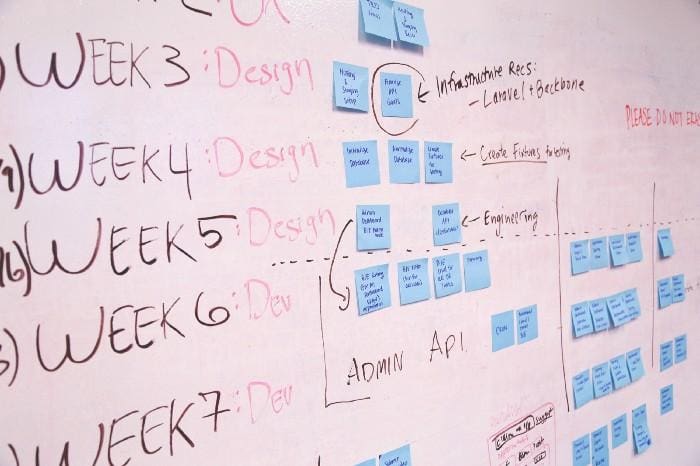4 Steps for Managing a Data Science Project
Good planning and preparation will not only improve productivity, but it will help avoid potential pitfalls and roadblocks that could be encountered during project execution.

Image Source: Pexels
Key takeaways
- Executing a data science project requires good planning
- Good planning and preparation will not only improve productivity, but it will help avoid potential pitfalls and roadblocks that could be encountered during project execution
Benjamin Franklin once said:
By failing to prepare, you are preparing to fail.
This article will discuss the four steps for managing a data science project: Plan, Prepare, Produce, and Publish.
1. Plan
Before building any machine learning model, it is important to sit down carefully and plan what you want your model to accomplish. Before delving into writing code, it is important that you understand the problem to be solved, the nature of the dataset, the type of model to build, how the model will be trained, tested, and evaluated.
You may start by providing a brief synopsis followed by a step-by-step plan of what you would like to accomplish. For example, before building a model you may ask yourself:
- What are the predictor variables?
- What is the target variable? Is my target variable discrete or continuous?
- Should I use classification or regression analysis?
- How do I handle missing values in my dataset?
- Should I use normalization or standardization when bringing variables to the same scale?
- Should I use Principal Component Analysis or not?
- How do I tune hyperparameters in my model?
- How do I evaluate my model to detect biases in the dataset?
- Should I use ensemble methods where I train using different models, then perform an ensemble average, e.g., using classifiers such as SVM, KNN, Logistic Regression, then average over 3 models?
- How do I select the final model?
2. Prepare
Before execution, it is important that you prepare in advance how to approach the project. You may ask yourself the following questions: What is the scale of the project? Is it an individual project? Do I need to have a teammate? What platform is best for building the model? Should I use R Studio or Jupyter notebook? Will it require the use of advanced productivity tools such as high-performance computing resources, or cloud services such as AWS or Azure? What is the timeline for project completion?
3. Produce (Design, Build, and Execute Your Model)
This is where you select the model that you would like to use, e.g., linear regression, logistic regression, KNN, SVM, Naive Bayes, Decision Trees, Deep Learning, K-means, Monte Carlo simulation, Time Series Analysis, etc. The dataset has to be divided into training, validation, and test sets. Hyperparameter tuning is used to fine-tune the model in order to prevent overfitting. Cross-validation is performed to ensure the model performs well on the validation set. After fine-tuning model parameters, the model is then applied to the test dataset. The model’s performance on the test dataset is approximately equal to what would be expected when the model is used for making predictions on unseen data.
4. Publish (Implement, Deploy, or Showcase Your Work)
In this stage, the final machine learning model is put into production to start improving the customer experience or increasing productivity or deciding if a bank should approve credit to a borrower, etc. The model is evaluated in a production setting in order to assess its performance. This can be done by comparing the performance of the machine learning solution against a baseline or control solution using methods such as A/B testing. Any mistakes encountered when transforming from an experimental model to its actual performance on the production line has to be analyzed. This can then be used in fine-tuning the original model. In some large-scale projects, the data scientist would have to work with other company officials and software engineers or machine learning engineers in order to deploy the model, for example building a web-based interface that can read data in real time, input the data into the model, then use the final model for making predictions.
In summary, we’ve discussed the 4 essential steps for data science project management: Plan, Prepare, Produce, and Publish. Good planning and preparation will not only improve productivity, but it will help avoid potential pitfalls and roadblocks that could be encountered during project execution.
Benjamin O. Tayo is a Physicist, Data Science Educator, and Writer, as well as the Owner of DataScienceHub. Previously, Benjamin was teaching Engineering and Physics at U. of Central Oklahoma, Grand Canyon U., and Pittsburgh State U.
